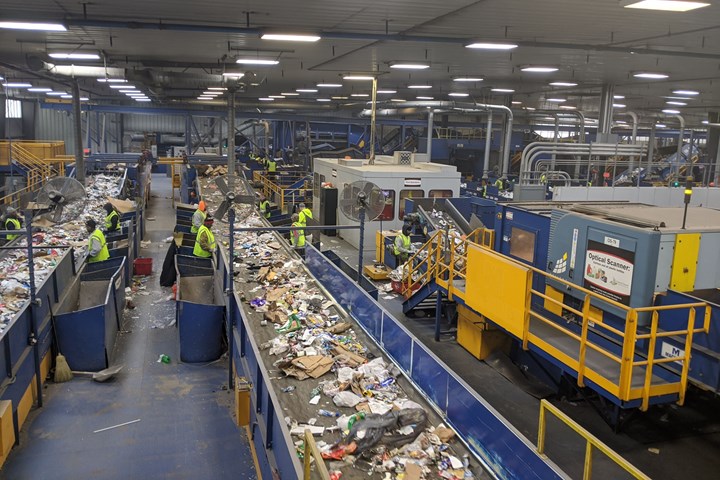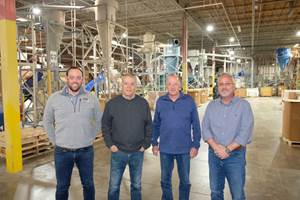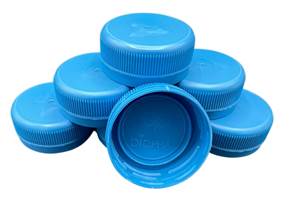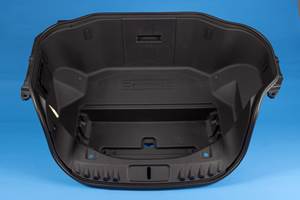Smart Systems Illuminate Material Recovery for Enhanced Plastics Recycling
Data collection and machine learning can give MRF operators and brand owners an enhanced view of the fate of recyclable materials.
Material recovery facilities (MRFs) sit at a critical juncture in the plastic material value chain. As stakeholders strive for greater material circularity, better data acquisition and feedback could reveal low-hanging fruit at the recovery stage.
Suppliers of automated and even AI-enhanced recovery systems seek to enable collaboration across the value chain, by bringing state of the art technology to MRF operations.
Better Data for MRF Operators
Operations at MRFs have long benefited from automated stations using near-infrared scanning and eddy current separation technology, but these systems are largely open-loop. To evaluate effectiveness, bale audits can be conducted periodically but require time and labor and yield only a snapshot. For more sophisticated, real-time, actionable data, some operators have turned to vision-based systems, such as RecycleOS from .

Workers remove unrecyclable materials by hand at an Ohio MRF.
Photo Credit: Matt Stonecash
RecycleOS is an AI software product that uses data from live camera feeds to identify and track individual items in the waste stream. Data on oversorting and undersorting of materials can be used to optimize sorting systems, including the implementation of robotics, which Everest also supplies.
“Quantifying the amount and type of plastics going to the landfill is eye opening for an (MRF) operator because they’ve never had this data available in real time before,” says JD Ambati, CEO and founder at EverestLabs.
Machine learning enables systems to get better over time, and adapt to the waste streams and operating characteristics where they are implemented, which of course vary across the country’s thousands of recycling programs.
Better Data for CPG Brands
Inventory tracking systems throughout the supply chain have given brands detailed information about exactly where and how many products are produced distributed, and sold. Marketing research reveals how customers select and utilize the products. But what happens next is a bit murkier. As recycling becomes more important, CPG brands have taken greater interest in the end of life stage for disposable products and packaging.
Brands can give their materials a better shot at being recycled by following guides, like the Association for Plastic Recycler’s . But consumers and advocates for the environment have expressed dissatisfaction with materials being “recyclable” in the most literal sense, i.e., that a product could theoretically be recycled assuming its recovery and ignoring all economic and social factors. For many, a recycled material must actually be recycled to be considered sustainable, and in order to be recycled a material must first be recovered.
By connecting brands with material recovery data, EverestLabs hopes to close that information loop as well.
“We are bridging the gulf between CPG brand and the MRF, using AI and automation. Our goal is to empower everyone in the ecosystem to make data driven decisions,” says Ambati.
According to Everest, the system can recognize individual products, even distinguishing between similar containers from competing brands. Not only can producers evaluate design changes based on real-world recoverability, but they can also learn how that recoverability varies from MRF to MRF or with regional differences in waste streams.
Sharing this kind of information and visibility between organizations provides an opportunity to increase recovery and recycling, and to make verifiable sustainability claims based on real world results. It could represent a leap forward from green labeling and wishcycling strategies.
Related Content
Evolving Opportunities for Ambitious Plastics Recycler
St. Joseph Plastics grew from a simple grinding operation and now pursues growing markets in recycled PP, food-grade recycled materials, and customized post-industrial and post-consumer compounds.
Read MorePHA Compound Molded into “World’s First” Biodegradable Bottle Closures
Beyond Plastic and partners have created a certified biodegradable PHA compound that can be injection molded into 38-mm closures in a sub 6-second cycle from a multicavity hot runner tool.
Read MoreAutomotive Awards Highlight ‘Firsts,’ Emerging Technologies
Annual SPE event recognizes sustainability as a major theme.
Read MoreDow, Circusil Collaborating on Silicone Recycling Facility
Dow and Circusil announced plans to construct a silicone recycling facility in Kentucky.
Read MoreRead Next
People 4.0 – How to Get Buy-In from Your Staff for Industry 4.0 Systems
Implementing a production monitoring system as the foundation of a ‘smart factory’ is about integrating people with new technology as much as it is about integrating machines and computers. Here are tips from a company that has gone through the process.
Read MoreBeyond Prototypes: 8 Ways the Plastics Industry Is Using 3D Printing
Plastics processors are finding applications for 3D printing around the plant and across the supply chain. Here are 8 examples to look for at NPE2024.
Read MoreMaking the Circular Economy a Reality
Driven by brand owner demands and new worldwide legislation, the entire supply chain is working toward the shift to circularity, with some evidence the circular economy has already begun.
Read More













